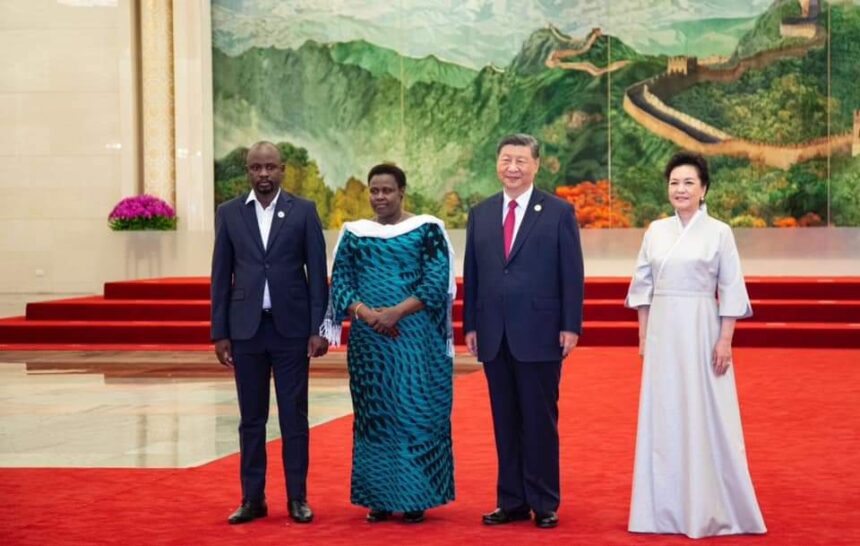The “China-Africa Ten Actions Partnership” stands as a testament to the growing significance of Sino-African relations. Focused on mutual growth and practical cooperation, the partnership not only showcases deep-rooted friendship but also paves the way for sustainable development across the African continent.
The China-Africa Ten Actions Partnership, jointly initiated by China and African nations, is rapidly becoming a cornerstone of international cooperation between the two regions.
The partnership, which includes a wide range of projects and initiatives, spans across industrial promotion, infrastructure development, trade, green energy, education, health, and security. It is designed not as a simple aid program, but as a collaborative effort aimed at shared prosperity and development.
One of the most visible outcomes of this partnership is the promotion of industrialization across Africa. Chinese enterprises have increasingly invested in Africa, building factories, creating job opportunities, and facilitating technology transfer.
In countries like Ethiopia, Chinese-built industrial parks have become hubs of local employment, enabling Africa to move toward greater self-sufficiency. This push for industrialization aligns with Africa’s ambitions of reducing its dependence on raw material exports and developing value-added manufacturing sectors.Infrastructure is another key pillar of this partnership.

Projects such as the Mombasa-Nairobi Standard Gauge Railway in Kenya have had a significant impact on local economies by improving transportation efficiency and reducing the cost of moving goods. The railway, which was completed with Chinese funding and expertise, has been hailed as a game-changer in East Africa, linking key cities and boosting trade. This infrastructure focus extends beyond transportation to include communication systems, water resources, and energy, all critical for Africa’s sustainable development.
Green development also features prominently in the partnership, underscoring the growing importance of addressing climate change and environmental degradation.
China has invested in solar and wind power projects across Africa, with Rwanda’s solar energy initiatives serving as an example of how the continent can address its energy deficit sustainably.
The construction of these solar farms not only provides clean energy but also creates jobs and supports local communities.In terms of capacity building, the China-Africa Ten Actions Partnership focuses on education and skills development. China has built schools, offered scholarships, and established vocational training centers across Africa, aimed at empowering the continent’s youth.
These initiatives are crucial as Africa grapples with a booming youth population, which could either become an economic asset or a liability, depending on the investment in education and training. Programs like the African Union Leadership Academy, supported by China, help African youth acquire leadership skills and technical expertise, enabling them to play a more active role in the continent’s development.

Health and public safety are also critical components of the partnership. During the COVID-19 pandemic, China extended significant aid to African countries, sending medical supplies, sharing technical expertise, and helping to build healthcare infrastructure.
The Chinese government’s commitment to enhancing public health in Africa goes beyond emergency responses; it includes long-term projects that strengthen local health systems, improve epidemic response capabilities, and foster medical research collaboration.
Cultural exchange remains a vital bridge between China and Africa. Through various initiatives, the partnership has deepened mutual understanding and respect.
Chinese cultural centers and Confucius Institutes in African countries promote language and cultural studies, while African art and music are increasingly finding audiences in China. These exchanges build the foundation for long-term diplomatic and economic relations, creating lasting bonds between the two peoples.
The partnership also places significant emphasis on peace and security, with China contributing to peacekeeping missions in Africa and providing military training to African forces. Stability is a prerequisite for economic growth, and China’s involvement in peacebuilding initiatives is seen as an effort to create a secure environment conducive to development.

On the global stage, China and African nations continue to advocate for multilateral cooperation, pushing for the reform of international institutions to better reflect the voices of developing countries. By presenting a united front, China and Africa are working to reshape global governance, seeking more equitable representation in decision-making processes, particularly within organizations such as the United Nations and the World Trade Organization.
The China-Africa Ten Actions Partnership is more than just a series of initiatives; it is a blueprint for a long-term, mutually beneficial relationship between China and Africa. As this partnership evolves, it promises to address some of Africa’s most pressing challenges, including industrialization, sustainable energy, and public health, while also promoting stability and cultural exchange.
Its success could serve as a model for how large-scale international cooperation can lead to tangible, positive outcomes for both sides.Looking ahead, the deepening of this partnership holds the potential to drive not only African development but also China’s role as a global leader in development cooperation.
As Africa continues its rise, the China-Africa partnership will likely serve as a key pillar in shaping the future of the global south. The mutual benefits of this partnership highlight the importance of collaboration in tackling the world’s shared challenges.







